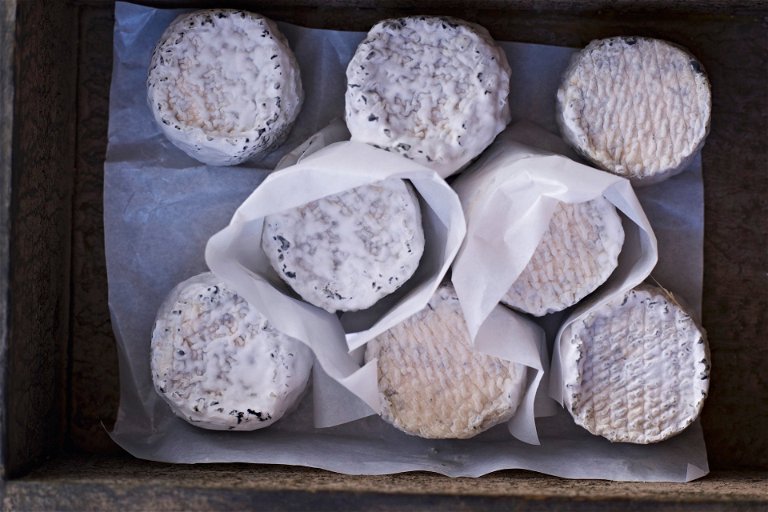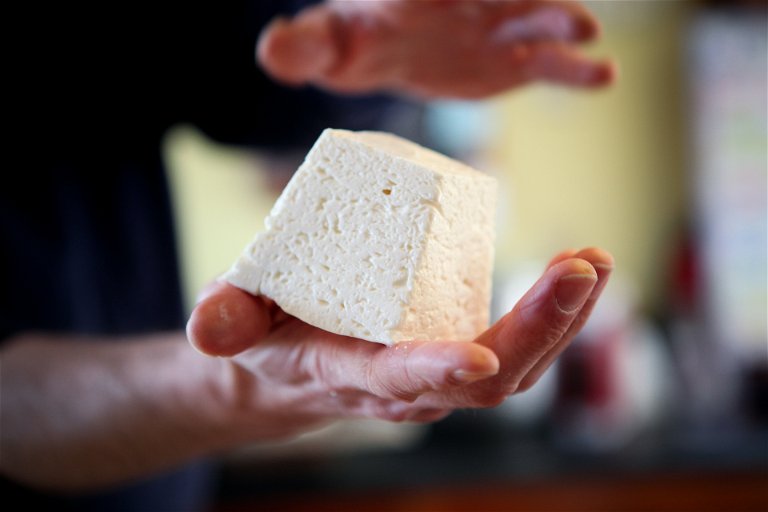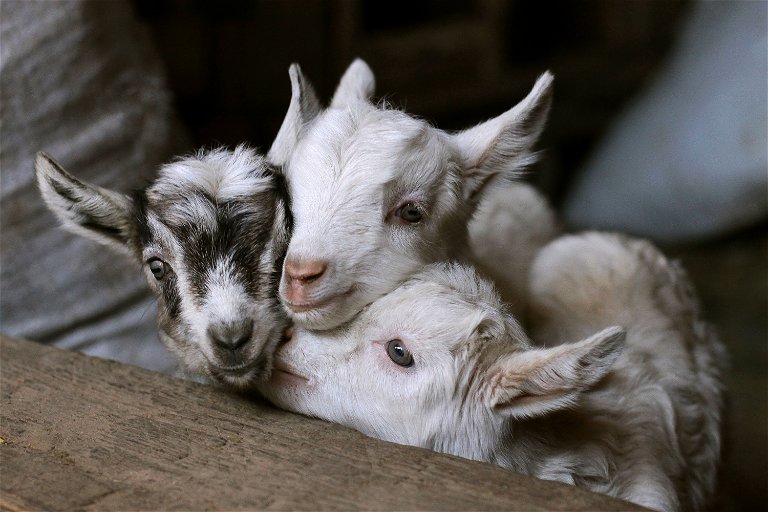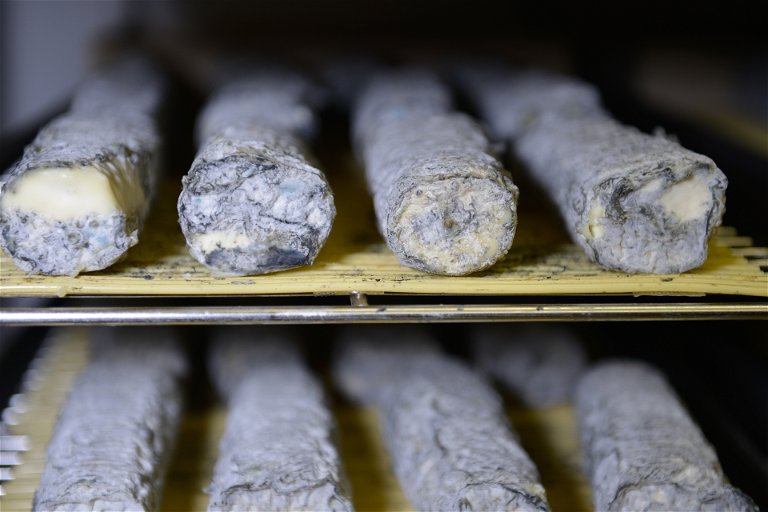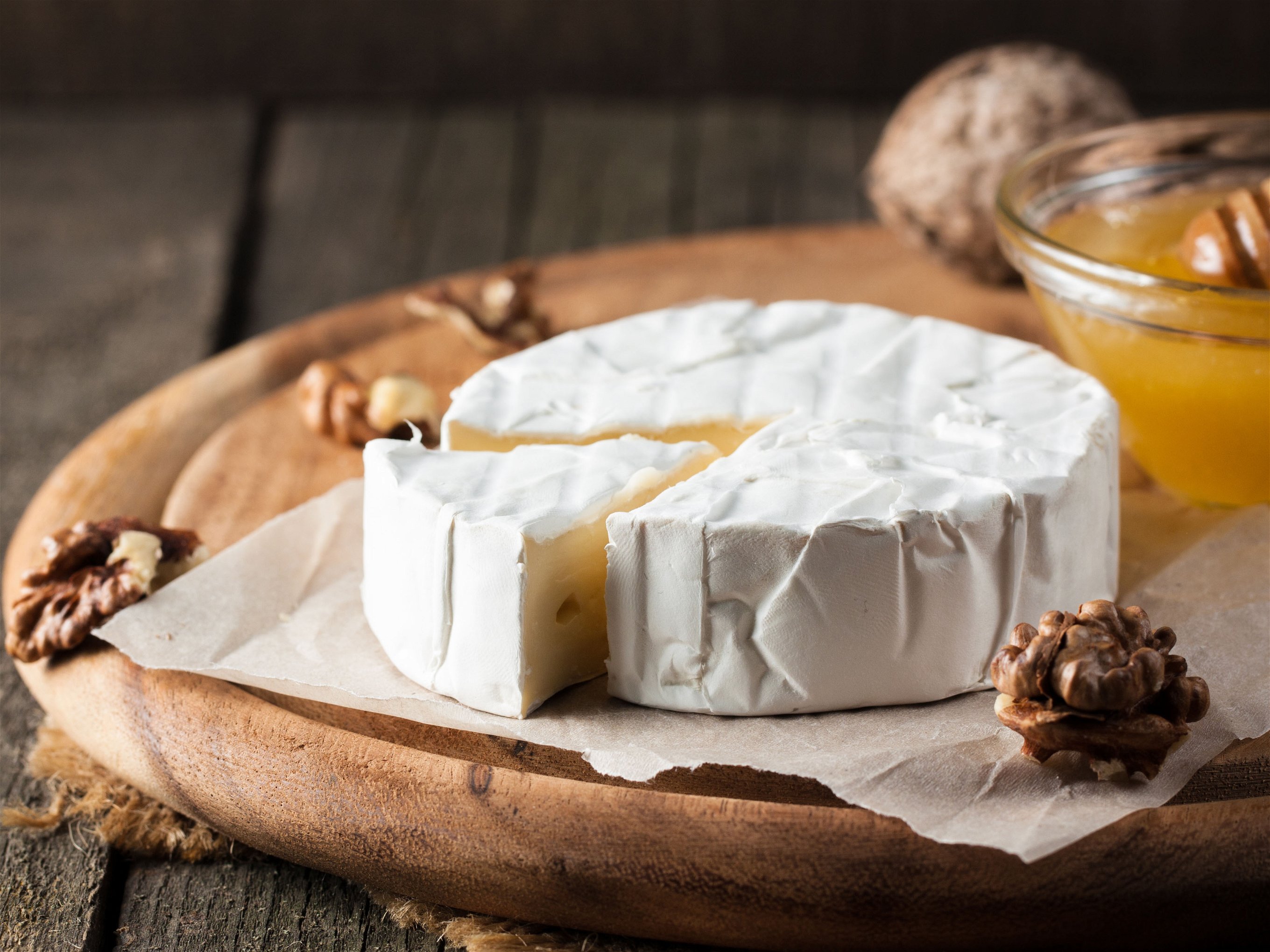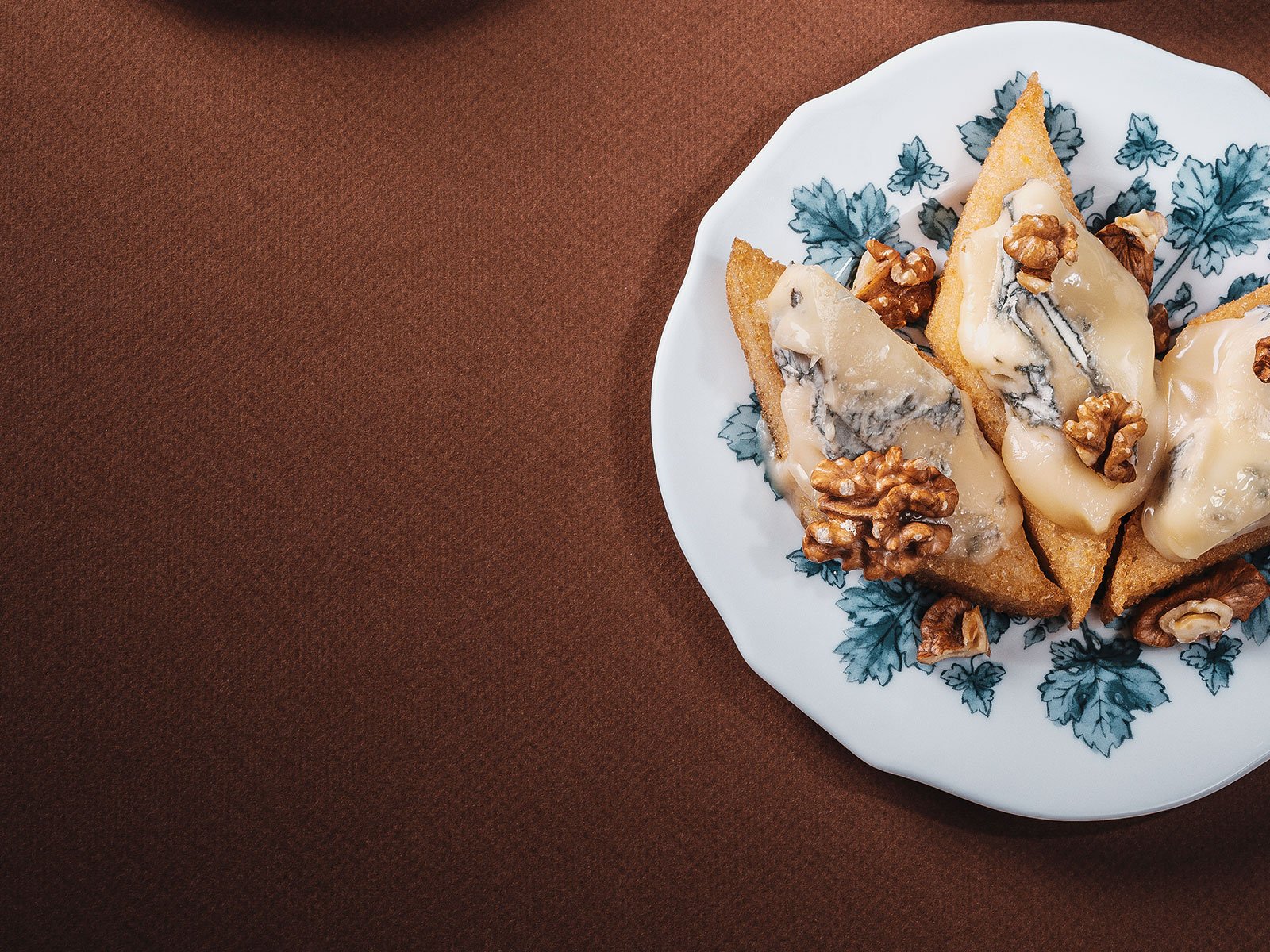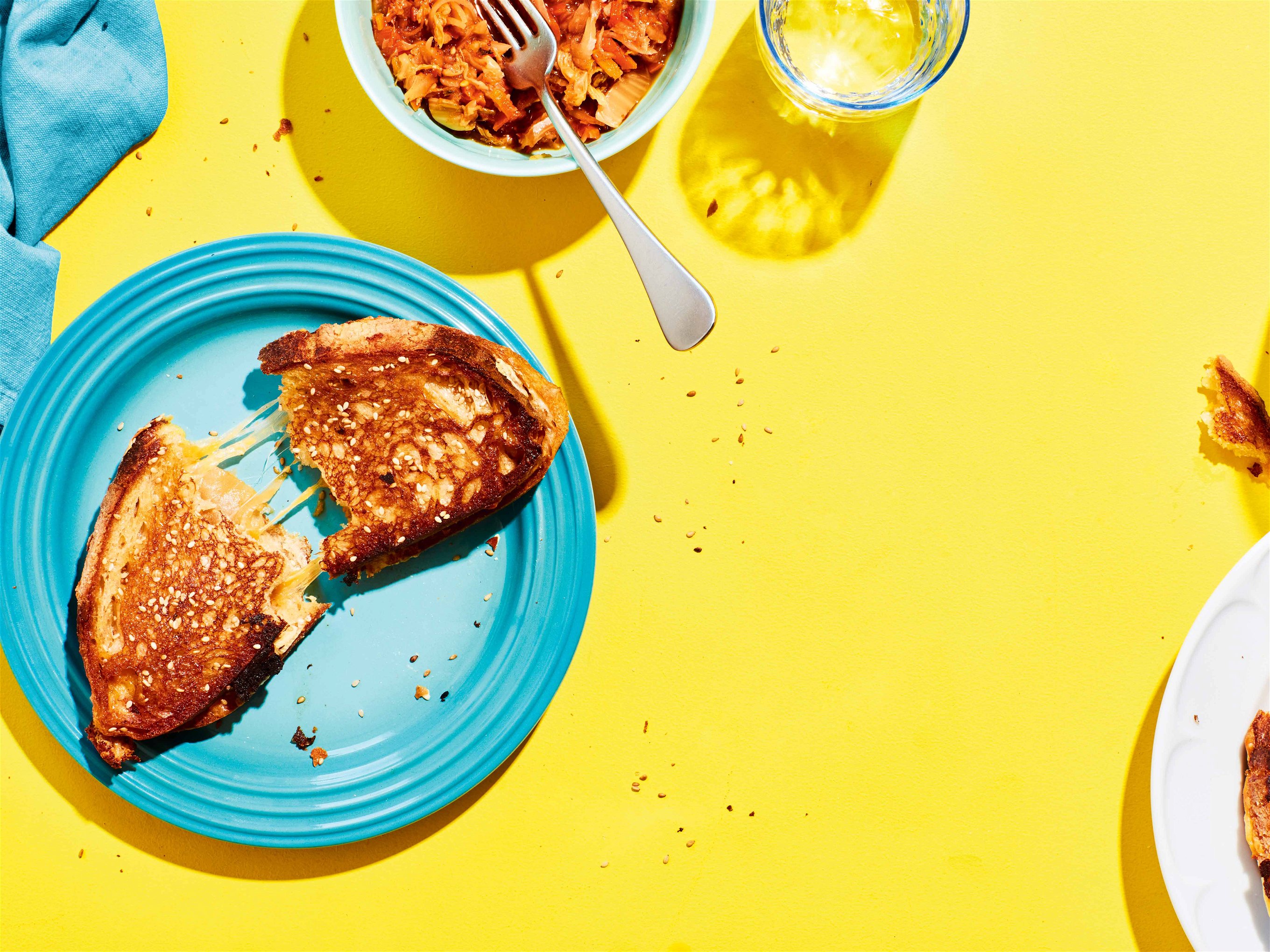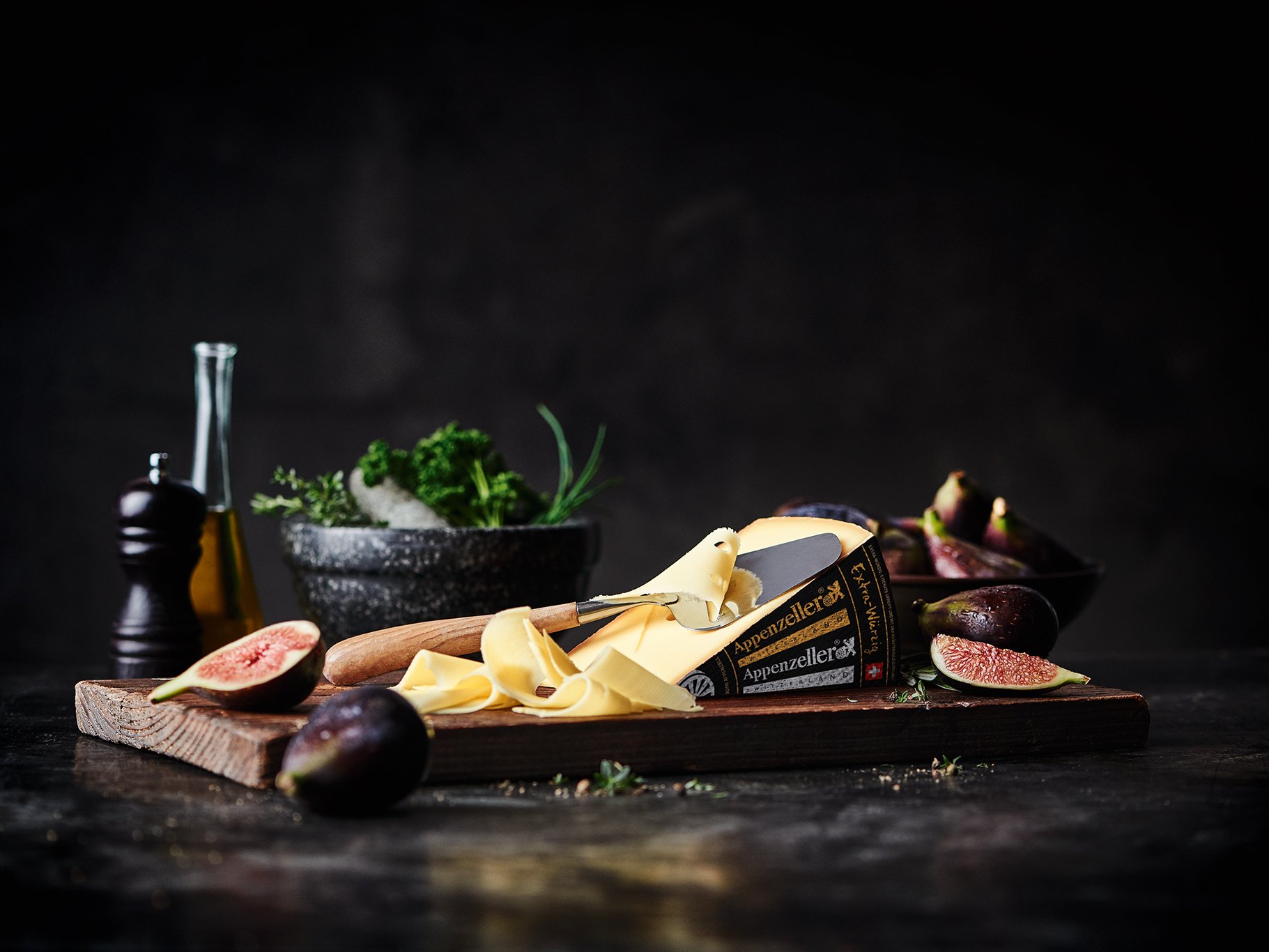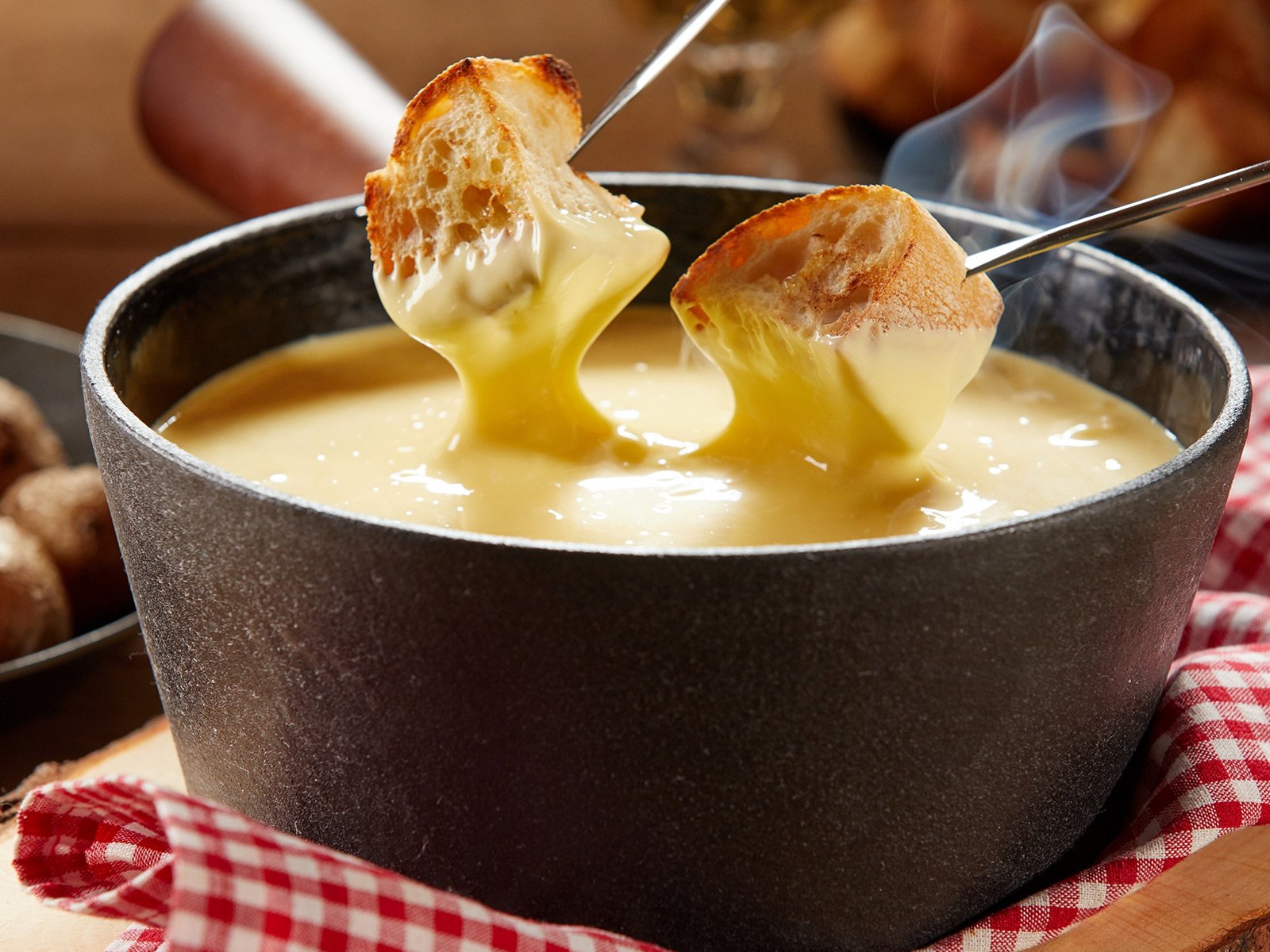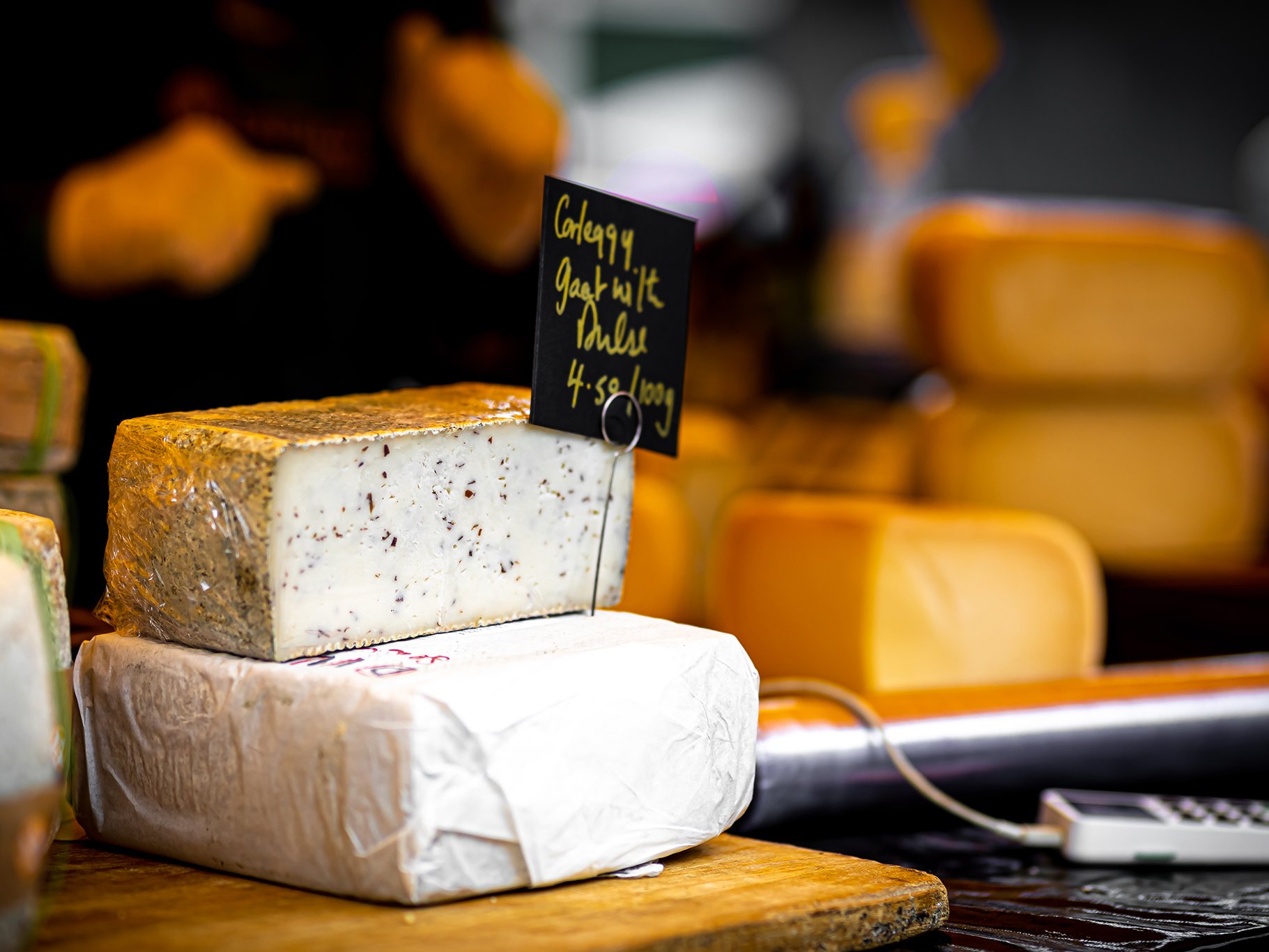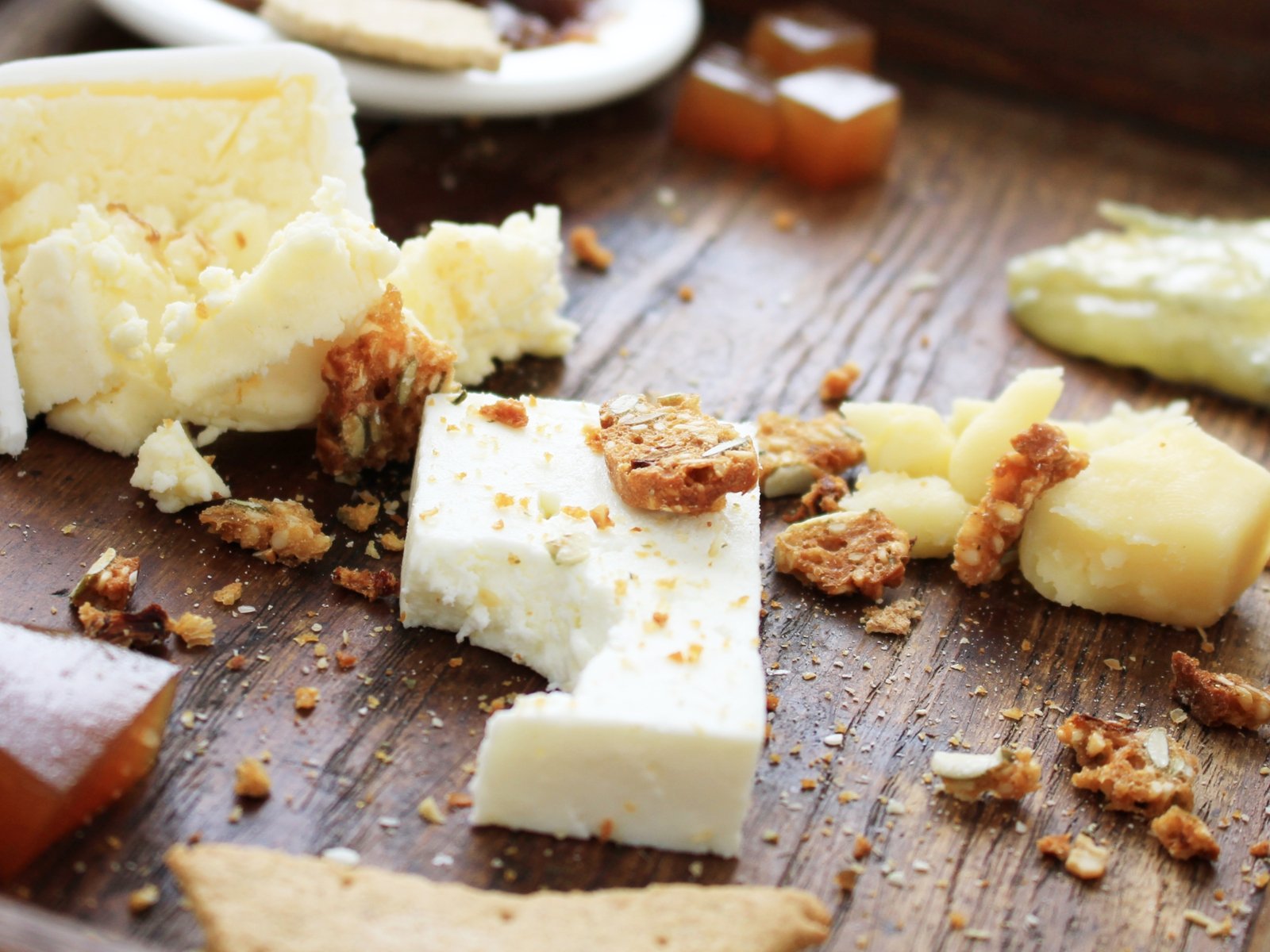The Glorious World of Goat's Cheeses
Goat's cheeses might usually be small but they pack a flavourful punch and, as our cheese expert explains, there are numerous reasons to celebrate chèvre.
Spring is on its way. Cheesemongers’ counters are beginning to fill with goat’s cheeses, appearing like buds among the hard Comtés and Cheddars of winter: little buttons, long cylinders, truncated pyramids.
Seasonality
Spring heralds the arrival of goat’s cheeses, appearing like buds among the hard Comtés and Cheddars of winter: little buttons, long cylinders, truncated pyramids. Ruminant animals naturally give birth in spring and produce milk from then until autumn. Over the last few centuries, as winter feed has improved, farmers have managed to get cows to calve in early autumn so their milk, and cheese, are available throughout the year. Though some producers have managed to get goats to give milk all year round, too, goat’s cheeses still tend to be more seasonal. Thus we enjoy a flush of cheeses in early spring which tails off in the autumn.
Goat's Cheese Basics
Most traditional goat’s cheeses are small, soft and mould-ripened. France is arguably the greatest goat’s cheese nation, producing a wide and varied range. You can always identify a goat’s cheese, because its paste – the body of the cheese – will be a pure, snowy white, unlike the sunny yellow of a cow’s milk or the ivory of sheep’s milk. The mould rinds of these soft cheeses are often populated with snow-white Penicillium candidum, familiar from cheeses like Camembert, with a lightly vegetal note, and the wrinkle of Geotrichum which can add sulphuric notes. Some have dots of blue (Penicillium roqueforti) or heavier coats of grey mould which add a musty flavour. Many others are dusted with ash, the alkalinity of which lowers the acidity of the rind, making it easier for the moulds to grow. Some very young, fresh cheeses have no rinds at all. Goat’s cheeses will tend to have a creamy, spreadable texture, that gets firmer with age. Flavours often include chalk, hazel or walnut, and herby, grassy notes. Figs, nuts and honey all make excellent partners on a cheese board. While goat’s cheeses revel in a suite of flavours, their most characteristic note is ‘goatiness’. A flavour for which there is no other word, and which some people find off-putting. This results from the presence of a set of medium-chain fatty acids: caproic, capric and caprylic – all Latinate ways of saying ‘goaty.’ Goatier cheese can be the result of careful ageing by makers and affineurs who appreciate it, or of unskillful cheesemaking. Rough handling of the milk breaks the fatty acids up, unleashing their flavours. The goat-shy should seek out younger cheeses or be guided by a cheesemonger.
History
Goat’s cheese might be humanity’s first cheese. We believe goats were among the earliest animals to be domesticated, some 10,000 years ago in the Zagros Mountains, in modern-day Turkey and Iran. Archaeological evidence suggests hunter-gatherers practiced an early form of transhumance, following the goats up the mountains to summer pastures, and back down again in autumn. Goats are also inquisitive and gregarious, which must have made them an easier candidate for domestication than the gigantic and heroically bad-tempered aurochs, ancestor of all modern domestic cattle.
We do not know what kind of cheese was made at the time, but in a hot climate without refrigeration, it likely was fresh cheese, a bit like the Spanish queso fresco, or brined cheeses which can keep longer, like Greek feta or its Turkish cousin beyaz peyniri. Fresh and brined cheeses of this sort are delicious, if not particularly complex. When Neolithic farmers of the Fertile Crescent, succumbing to population pressure, began emigrating to Europe, bringing their cheesemaking skills with them, the cool, damp climate proved a perfect environment for cheeses to keep longer, developing mould rinds and new complex flavours as they aged.
Goat Central: Loire
A myriad of goat’s cheeses are made all over France, but the centre of excellence is the Loire Valley in central France. Legend has it that the goats of the region are descendants of Berber goats, a sort of on-the-hoof ration for the warriors who invaded the Frankish territories from Moorish Spain, until their defeat at the Battle of Tours in 732. Another explanation for the preponderance of goats in this area of France is that the soil, while too poor for most crops, is as perfect for hardy goats as for the vines that flourish there.
Crottin is the star of the Loire Valley. Amusingly, its name refers to the resemblance between shrunken, brown, older cheeses and a goat turd, crot being the local dialect word for the excrement. Younger cheeses are soft and pudgy with fresh mild flavours, while older ones have an intense, peppery flavour with an animalistic tang.
The most mature are so hard that they can be shaved onto a salad or onto bread and toasted. Another star is Sainte Maure which comes in long, grey logs, with a hollow straw down the middle to hold it together. They are soft, much creamier than a Crottin, and come with a luxuriant texture when young. Then there is Valençay, a tall, truncated pyramid, covered in ash. Its shape is subject to historic myth: apparently Valençay used to have pointy tops until Napoleon, after his defeat in Egypt in 1802, could no longer bear the site of pyramids, so his ministers ordered their tops removed. However, the shape is simply more practical: pointed tops would be incredibly hard to handle as they matured. These cheeses are a pleasing example of the maxim “what grows together, goes together.” Their salty, mineral flavours pair perfectly with the flinty white wines of the region, such as Sancerre and Pouilly-Fumé.
Other Goat’s Cheeses
Provence also supplies the world with some excellent cheese. The most famous of these, and the prettiest, is Banon, a small disc wrapped in a chestnut leaf. The cheesemakers of Provence use less salt than those of the Loire and set their milk swiftly, leaving less time for acidity to develop. Sweeter than their Loire cousins, these cheeses go perfectly with the ripe, fruity rosé wines of that region – a perfect summer snack.
Digestibility & Health
Provence also supplies the world with some excellent cheese. The most famous of these, and the prettiest, is Banon, a small disc wrapped in a chestnut leaf. The cheesemakers of Provence use less salt than those of the Loire and set their milk swiftly, leaving less time for acidity to develop. Sweeter than their Loire cousins, these cheeses go perfectly with the ripe, fruity rosé wines of that region – a perfect summer snack.
French mould-ripened goat’s cheeses tend to be small, ranging from 60g to about 250g. This is only in part down to the fact that goats are smaller than cows and give less milk, since their milk is also lower casein alpha-S1, the milk protein responsible for structure in a cheese. It is this protein – much more prevalent in cow’s milk – that provokes allergic reactions in some people. Sufferers tend to find that goat’s milk and cheese are much easier to tolerate. The fat particles in goat’s milk are also smaller than those in cow’s milk, which make it easier for everyone to digest, intolerances or allergies aside.
This is not new knowledge. Pliny the Elder in his Naturalis Historia states with his usual authority that “goat’s milk agrees the best with the stomach.” He also recommends a medicine made from the whey boiled up with wine which is “administered in cases of epilepsy, melancholy, paralysis, leprosy, elephantiasis, and diseases of the joints.” For most of these ailments we recommend sticking with modern medicine, though we agree that a good goat’s cheese washed down with some crisp white wine is an excellent cure for melancholy.
